Medical Disclaimer: This article is for informational purposes only and does not constitute medical advice. The content is not intended to be a substitute for professional veterinary advice, diagnosis, or treatment. Always seek the guidance of your veterinarian with any questions you may have regarding your pet’s health.
Table of Contents
It’s a heart-wrenching sound every devoted dog owner dreads: the frantic barking and scratching that begins the moment you close the door. In my Ottawa clinic, I often meet owners filled with guilt and frustration, wondering what they’re doing wrong. You’re not alone, and your dog isn’t being “bad” They may be experiencing genuine panic.
Key Takeaways
True separation anxiety in dogs is more than just sadness; it’s a clinical panic disorder. A proper veterinary diagnosis is crucial to rule out other medical or behavioural issues. The most effective treatment combines behaviour modification (like desensitization) with environmental enrichment. In some cases, medication is a necessary tool to help your dog learn new, calmer behaviours. Management requires patience and consistency, but with the right approach, you can restore peace to your home and confidence in your dog. Remember, the goal is progress, not perfection, in managing your dog’s separation anxiety.
What is Separation Anxiety in Dogs?
You can also visit: https://doglifeexpert.com/why-dogs-tilt-their-heads-5-proven-reasons/
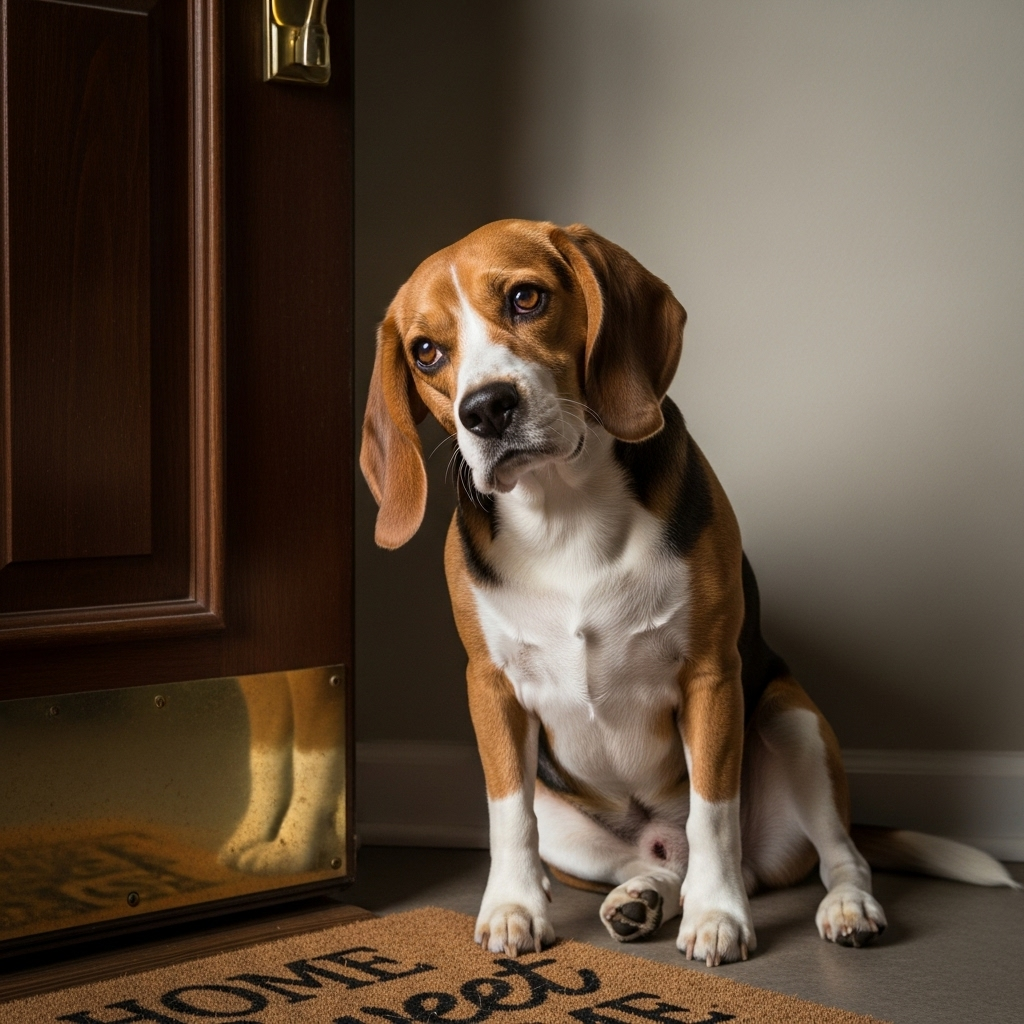
It’s More Than Just a Little Whining
First, let’s be clear: separation anxiety in dogs is not a sign of poor training or a spiteful pet. It is a genuine panic attack. When left alone, a dog with this condition experiences overwhelming stress, similar to a human phobia. Their behaviour isn’t a choice; it’s a reaction to intense fear. This is a condition the Merck Veterinary Manual describes as a genuine distress response to being left alone or separated from their primary person. Understanding this distinction is the first step toward compassion and effective management.
Recognising the Telltale Signs
While every dog is different, the symptoms of separation anxiety in dogs are often quite dramatic and hard to miss. You might notice:
- Destructive Behaviour: Chewing on doorframes, destroying furniture, or tearing up personal items, especially around exits.
- Excessive Vocalisation: Barking, howling, or whining that starts soon after you leave and continues for an extended period.
- Inappropriate Urination or Defecation: A house-trained dog having accidents only when left alone is a classic sign.
- Attempts to Escape: Frantic digging and scratching at doors or windows, which can sometimes lead to self-injury.
- Subtler Signs: Pacing, drooling, or trembling as you prepare to leave are also indicators of growing distress.
Why Do Dogs Develop Separation Anxiety?
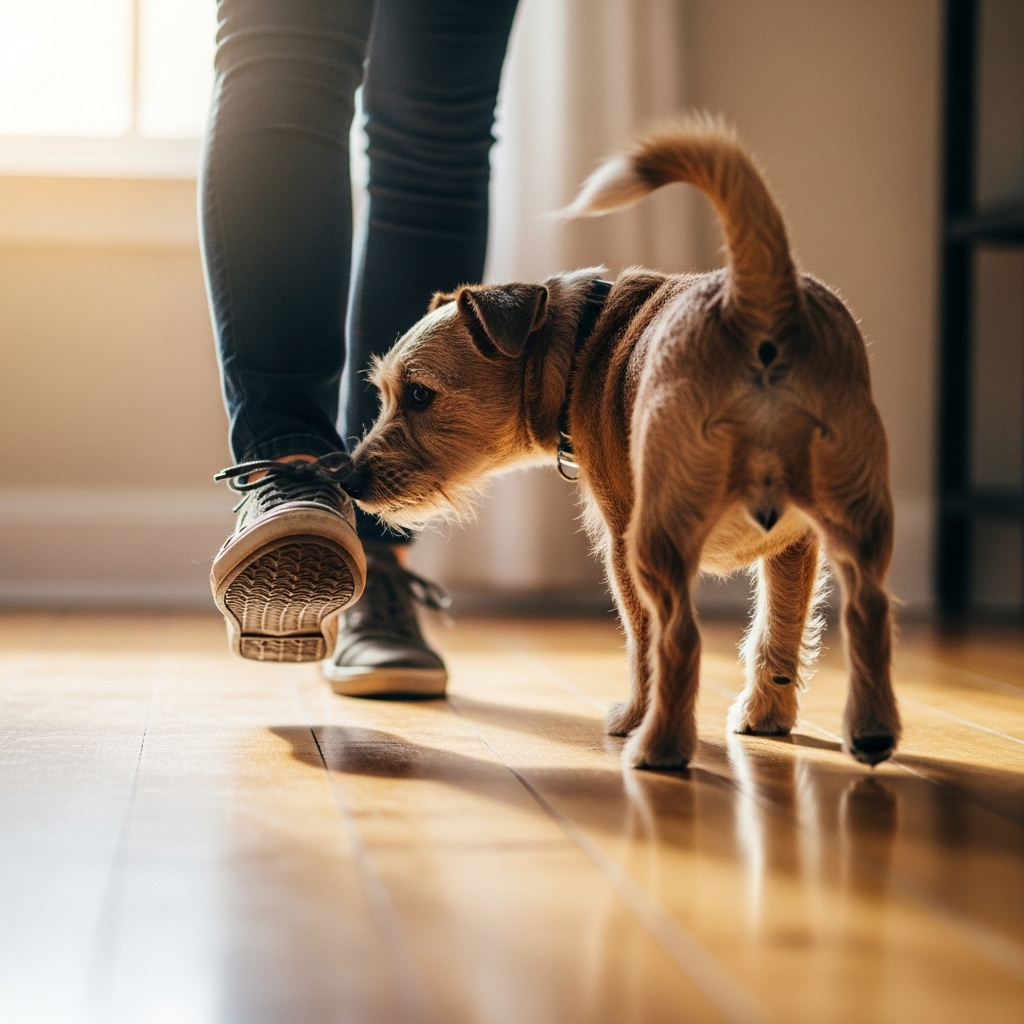
There’s no single answer, as any dog can develop separation anxiety, regardless of breed or background. However, certain factors can increase the risk.
Common Triggers and Risk Factors
Often, the onset of separation anxiety in dogs is linked to a significant life change. This could be a move to a new house, a sudden change in the family’s schedule (like a return to in-office work after a long time at home), or the loss of another pet or family member. Rescue dogs, particularly those with a history of being abandoned or rehomed multiple times, are also more susceptible.
A Note from My Practice: The “Velcro Dog” Phenomenon
I remember a rescue Border Collie mix named Max who came into my Ottawa practice. His owners described him as a perfect “velcro dog” who followed them from room to room. While this was endearing when they were home, it was a clue. This hyper-attachment meant Max had never learned to be comfortable on his own, making his alone time terrifying. This is a common pattern I see in cases of separation anxiety in dogs.
Getting a Definitive Diagnosis

Before you can effectively treat separation anxiety in dogs, you must be certain that’s what you’re dealing with. Several other issues can mimic its signs.
Ruling Out Other Medical Issues
A dog who urinates indoors might have a urinary tract infection, kidney disease, or even canine cognitive dysfunction (in older dogs). As noted in the Saunders Manual of Small Animal Practice, a thorough physical exam and sometimes lab work are essential first steps. Destructive chewing could simply be a sign of boredom in an under-stimulated adolescent dog, not true panic.
The Importance of a Veterinary Consultation
A veterinarian is your best partner in this journey. We can help you rule out underlying medical causes and confirm a behavioural diagnosis. Setting up a camera to record your dog’s behaviour when you’re gone is an invaluable tool. It allows us to see precisely when the anxious behaviours start and what they look like. In fact, recent research helps us differentiate true panic from other issues, as a 2020 study in Frontiers in Veterinary Science highlights the need to disambiguate various separation-related problems, confirming that not all alone-time distress is the same. This detailed approach is key to treating separation anxiety in dogs effectively.
The Cornerstones of Treatment: A Multi-faceted Approach
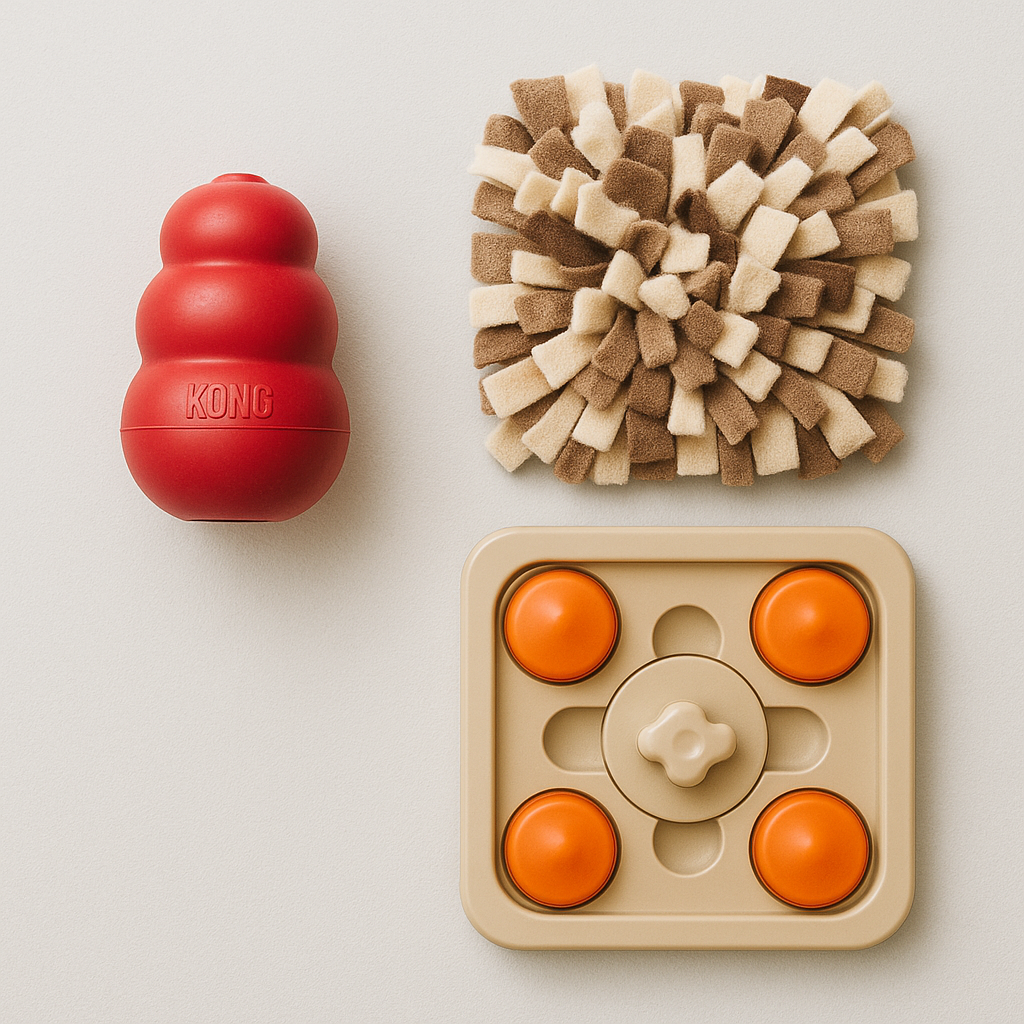
Treating separation anxiety in dogs isn’t about a quick fix. It requires a layered strategy that addresses both the psychological and emotional needs of your pet.
Behaviour Modification: The Foundation of Success
This is the most critical piece of the puzzle. The goal is to change your dog’s association with being alone from something terrifying to something tolerable, or even pleasant. This is done through two main techniques:
- Desensitisation: Gradually getting your dog used to cues that you’re leaving (picking up keys, putting on shoes) without actually leaving. Then, you practice very short departures for seconds at first and slowly build up the duration.
- Counter-Conditioning: Changing the emotional response. This involves providing a high-value, long-lasting treat (like a frozen food puzzle) that your dog only gets when they are left alone. The goal is for them to associate your departure with something wonderful. According to Blackwell’s Five-Minute Veterinary Consult, this process must be done at a sub-threshold level, meaning you never push the dog to the point of anxiety.
Environmental Enrichment: Keeping Your Dog Engaged
A bored dog’s mind is fertile ground for anxiety, making your absence its sole focus. Meaningful environmental enrichment is a powerful strategy to lower baseline stress, build confidence, and give your dog a productive “job” to do. A mentally fulfilled dog is naturally more resilient against the challenges of separation anxiety in dogs.
Puzzle Toys and Feeders: Start by ditching the regular food bowl. Making your dog work for meals redirects their focus from anxious thoughts to engaging problem-solving. Food-stuffable toys like frozen Kongs can turn a quick meal into a long project. This is central to counter-conditioning for separation anxiety in dogs; reserve a special, high-value toy that they only get when you are about to leave.
Snuffle Mats and Training: A dog’s nose is incredibly powerful, and the act of sniffing is scientifically shown to be calming. Snuffle mats encourage this natural foraging instinct, providing a deeply satisfying mental workout. Similarly, short, 5-minute positive training sessions build immense confidence. Practising cues like “sit” or “go to your bed” teaches your dog how to succeed, which is a massive boost against feelings of helplessness.
The Right Kind of Exercise: This type of exercise is critical. For dogs prone to separation anxiety, a high-intensity game of fetch right before you leave can increase adrenaline and make it harder to settle. Instead, focus on a long, structured walk or a “decompression walk” in a quiet area where they can sniff freely. This exertion helps lower stress hormones, leading to a genuinely relaxed dog ready for a nap.
The Role of Medication and Supplements
For moderate to severe cases of separation anxiety in dogs, behaviour modification alone may not be enough. If a dog is too panicked, they are physiologically unable to learn. In these situations, medication isn’t a crutch; it’s a tool that helps the brain become receptive to training. While behaviour modification is key, sometimes we need extra support. As discussed in a 2021 review in the Journal of the American Veterinary Medical Association, specific medications like fluoxetine or clomipramine can be incredibly effective when used in combination with a behaviour plan. There are also calming supplements that may help milder cases. Always discuss these options with your veterinarian.
At-Home Checklist: 5-Minute Plan for Managing Separation Anxiety

- Low-Key Departures: Ignore your dog for 5-10 minutes before you leave and when you return. This makes your coming and going less of a major event.
- Establish a Safe Space: Make their crate or a specific room a happy place with comfy bedding and special toys. It should never be used for punishment.
- Use a “Departure Cue” Treat: Give your dog a high-value puzzle toy 5 minutes before you walk out the door.
- Practice “Absence Cues”: Pick up your keys, put on your coat, and then just sit down on the couch. This breaks the association between these actions and your departure.
- Vary Your Routine: Sometimes put your dog in their safe space while you’re still home. Leave through different doors. This unpredictability can reduce anticipatory anxiety about your routine for leaving.
What to Expect: The Cost of Treating Separation Anxiety in Canada
Addressing separation anxiety in dogs is an investment in your pet’s well-being. Costs can vary significantly based on your location and the severity of the condition.
| Service/Product | Typical Canadian Cost Range | Notes |
| Initial Veterinary Consult | $80 – $150 | To rule out medical issues. |
| Behavioural Consult | $200 – $500 | With a veterinarian or veterinary behaviourist. |
| Certified Trainer/Behaviourist | $100 – $300 per session | For the ongoing implementation of the behaviour plan. |
| Prescription Medication | $50 – $150 per month | Cost depends on the drug and the dog’s size. |
| Calming Supplements | $30 – $80 per month | E.g., L-theanine, tryptophan-based products. |
| Enrichment Toys/Cameras | $50 – $250+ | One-time costs for puzzle toys, webcams, etc. |
Prevention: Can You Stop Separation Anxiety Before It Starts?
While you can’t prevent every case of separation anxiety in dogs, you can certainly lay a strong foundation for independence, especially with puppies or newly adopted dogs.
- Crate Train Properly: Teach your puppy that their crate is a safe, relaxing den from day one.
- Practice Alone Time Early: From a young age, ensure your puppy spends short periods alone in a puppy-proofed area with engaging toys.
- Promote Confidence: Early, positive socialisation helps create a resilient adult dog that is less likely to be fearful.
- Avoid Creating a “Velcro Dog”: Encourage your dog to settle on their bed instead of constantly being on your lap or at your feet.
Frequently Asked Questions (FAQs)
Q: Can a dog suddenly develop separation anxiety?
A: Absolutely. It often happens after a major life change, such as a move, a new baby, or a change in your work schedule. An underlying medical issue that causes pain or discomfort can also trigger the sudden onset of separation anxiety in dogs.
Q: Does getting another dog help with separation anxiety?
A: Usually, no. Separation anxiety in dogs is typically an attachment to a specific person, not just general loneliness. In some cases, you may end up with two dogs with separation anxiety.
Q: How long does it take to see improvement?
A: It varies widely. With a consistent behaviour modification plan, some owners see small improvements within a few weeks. For severe cases, it can be a months-long process. Patience is essential.
Q: Is it my fault my dog has separation anxiety?
A: No. This is a common feeling, but it’s important to let go of the guilt. This is a clinical condition, not a result of you loving your dog “too much” or making a mistake. Focusing on a forward-looking treatment plan is the most productive approach.
A Final Word of Hope
Living with a dog suffering from separation anxiety can feel isolating and overwhelming, but I want to assure you that there is a path forward. This journey will test your patience, but every small victory, a minute longer of calm, a day without destruction is a step toward peace. By understanding that this is a true medical condition and committing to a consistent, compassionate plan, you are not just managing a problem; you are healing your beloved companion’s deepest fears. You are their advocate and their safe space, and together, you can overcome the challenge of separation anxiety in dogs.


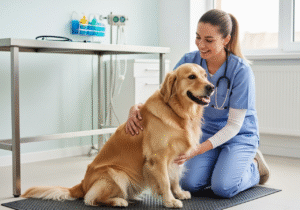
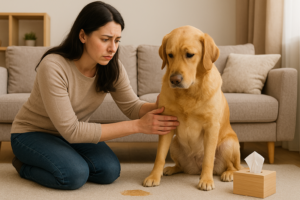
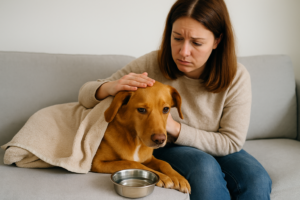
Pingback: Dog Head Tilt: 7 Surprising Reasons & When to Worry